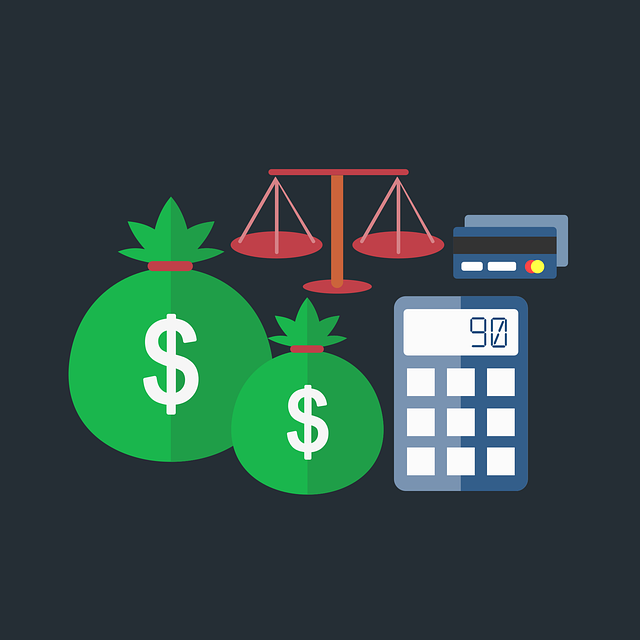When considering loan options, borrowers should explore traditional bank loans, peer-to-peer lending, and specialized options like personal, home equity, small business, and student loans. Understanding each type's unique features, advantages, risks, and drawbacks is crucial for making an informed decision that aligns with personal circumstances and financial goals while minimizing potential dangers.
When considering a loan, understanding your various options is crucial. This comprehensive guide explores different types of loans, evaluating their unique pros and cons. From fixed-rate mortgages to personal loans and everything in between, we unlock the benefits and potential drawbacks of each option. By delving into these factors, you’ll be empowered to make an informed decision that aligns with your financial needs. Discover strategies for navigating loan options effectively and choosing the right fit.
- Understanding Different Types of Loans: A Comprehensive Overview
- Evaluating the Pros: Unlocking the Benefits of Each Loan Type
- Weighing the Cons: Potential Drawbacks and Risks to Consider
- Making an Informed Decision: Strategies for Choosing the Right Loan Option
Understanding Different Types of Loans: A Comprehensive Overview

When considering loan options, it’s crucial to understand the diverse types available to cater to various financial needs. Each loan category has its unique characteristics, advantages, and potential drawbacks. From traditional bank loans to innovative peer-to-peer lending, borrowers have a spectrum of choices. Understanding these differences is essential for making an informed decision that aligns with individual circumstances.
Traditional bank loans often offer fixed interest rates and structured repayment terms, providing clarity and predictability. However, they may require substantial collateral and strict creditworthiness criteria. In contrast, alternative loan options like peer-to-peer lending or online lenders can be more accessible, offering flexibility in terms of both interest rates and borrower eligibility. These platforms connect borrowers directly with investors, potentially facilitating faster funding but may come with variable interest rates and less traditional underwriting processes. Exploring these various loan options is key to finding the best fit for your financial goals while balancing risk and reward.
Evaluating the Pros: Unlocking the Benefits of Each Loan Type

When evaluating different loan options, it’s crucial to look beyond just interest rates. Each type of loan comes with its unique set of benefits tailored to specific financial needs. For instance, personal loans offer flexibility in terms of usage and often have simpler application processes. This makes them ideal for unexpected expenses or consolidation. On the other hand, home equity loans provide access to significant funds secured by your property, making them preferable for larger purchases like renovations or education.
Business owners might find small business loans appealing due to their tailored features designed to support entrepreneurial ventures. These loans often come with favorable terms and may include government incentives. Furthermore, specialized loan types such as student loans offer low-interest rates and flexible repayment plans, making them essential for higher education funding. Understanding these pros allows borrowers to make informed decisions, matching their financial goals with the most suitable loan option.
Weighing the Cons: Potential Drawbacks and Risks to Consider

When weighing different loan options, it’s crucial to look beyond the attractive interest rates and repayment terms. Each loan type comes with its own set of potential drawbacks and risks that can significantly impact your financial health. For instance, while a personal loan might offer flexibility, it could also result in higher borrowing costs if not repaid promptly. Similarly, a home equity loan provides access to substantial funds but ties the value of your property as collateral.
Other cons to consider include stringent qualification criteria for certain loans, hidden fees, and the possibility of falling into debt traps with variable interest rates. Additionally, some loan options may have limited usage restrictions, requiring borrowers to adhere to specific purposes. It’s essential to carefully evaluate these factors to choose the most suitable loan that aligns with your financial goals while mitigating associated risks.
Making an Informed Decision: Strategies for Choosing the Right Loan Option

When considering loan options, making an informed decision is paramount. The first step involves evaluating your financial needs and goals. Different loan types cater to various purposes, from home purchases to education funding or business expansion. Understanding the specific requirement will guide you in selecting the most suitable option.
Next, compare the pros and cons of each loan option meticulously. Interest rates, repayment terms, collateral requirements, and additional fees are crucial factors. Researching lender reputation and reading customer reviews can also provide valuable insights. Additionally, assess your creditworthiness as it significantly impacts loan eligibility and interest rates. By employing these strategies, you’ll be better equipped to choose the right loan option that aligns with your financial aspirations.






